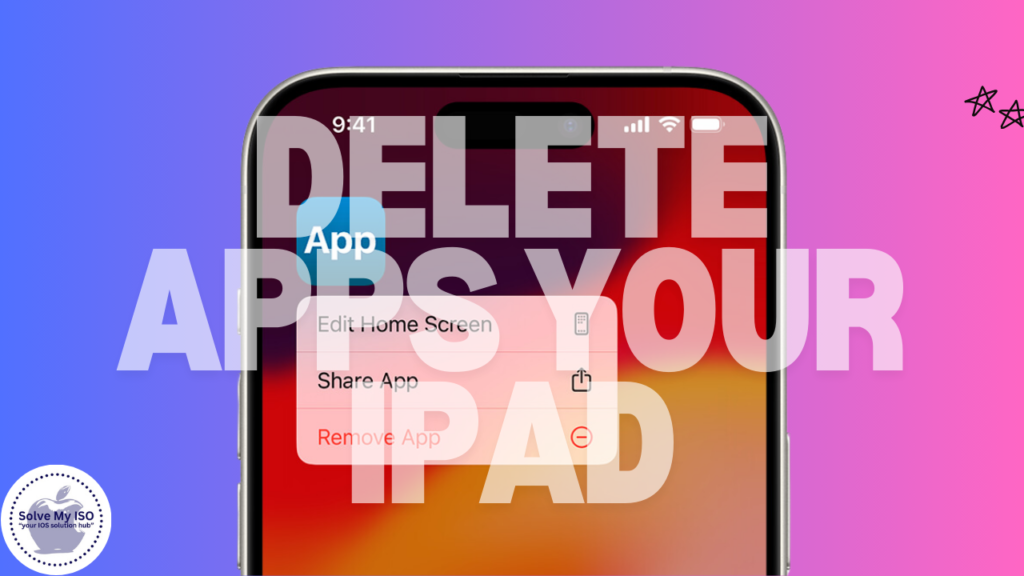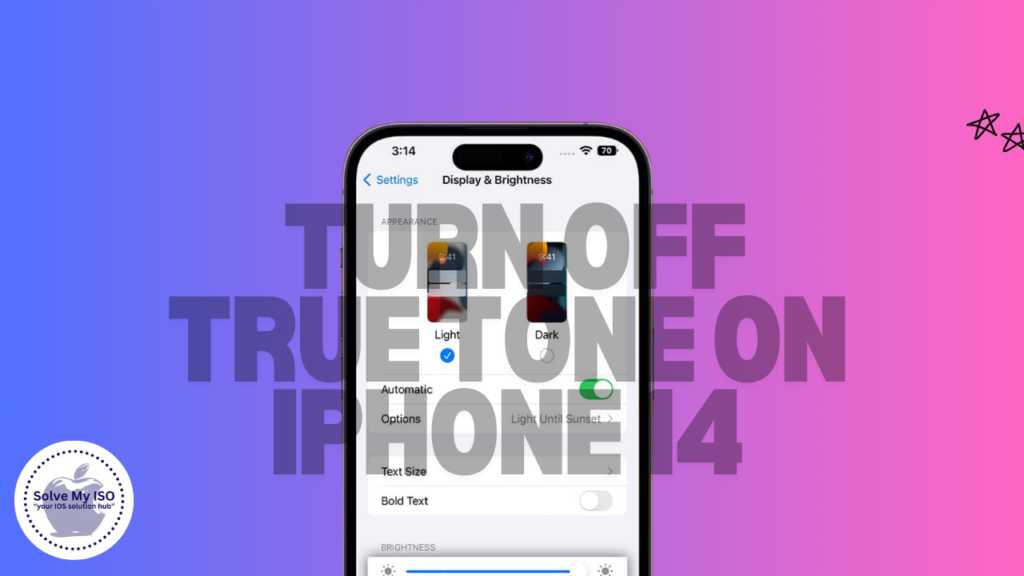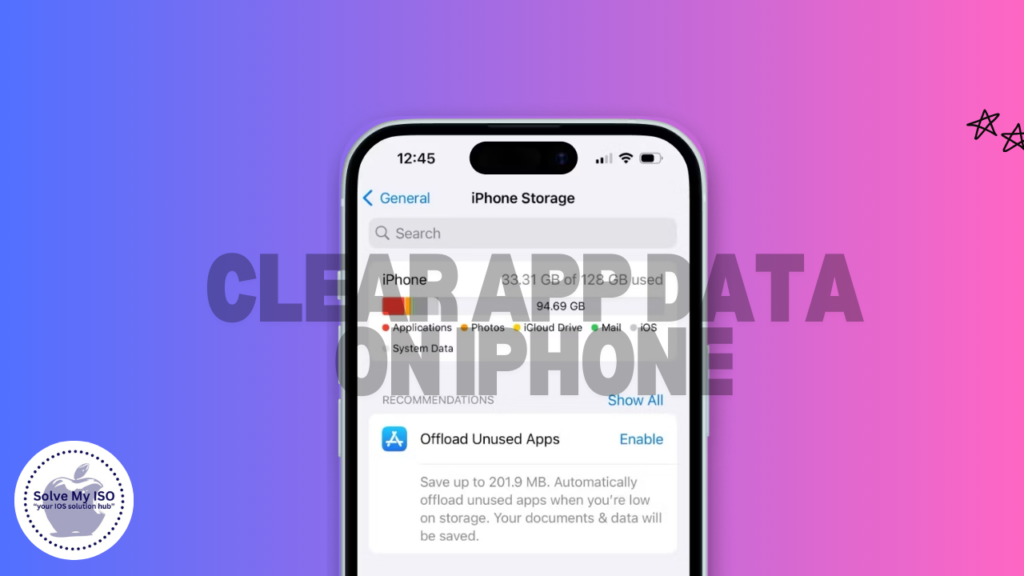
In today’s fast-paced digital world, smartphones and tablets are flooded with a myriad of apps. While some of these apps become essential tools for daily tasks, many others are quickly forgotten and left unused. These neglected apps can clutter your device, take up valuable storage space, and make it difficult to find the ones you actually need.
If you’re looking to free up storage, declutter your home screen, or remove apps you no longer use, it’s crucial to know how to delete or hide them effectively. In this easy-to-follow guide, we will explore proven methods for Delete apps on iPad. By mastering app management, you can keep your device organized and ensure it runs smoothly.
Optimize your mobile experience today by learning how to manage your apps efficiently!
Can You Delete Built-in Apple Apps?
For years, iPhone and iPad users experienced frustration with the inability to Delete built-in Apple apps like Safari, Messages, and Photos. These default apps were deeply integrated into the iOS ecosystem, preventing their removal. However, with the introduction of iOS 10, Apple finally gave users the freedom to delete many pre-installed apps, marking a significant improvement for those who prefer third-party alternatives.
Despite this welcome update, certain essential apps—including Messages, Photos, Safari, and Settings—remain non-removable, as they are vital to the operation of the iOS system. This change empowers users to customize their devices while ensuring that core functionality is preserved. Embrace the flexibility of iOS 10 and enjoy a more personalized experience on your iPhone or iPad!
While you can’t delete these core apps, there is a workaround—you can hide them from your home screen, keeping your device tidy and less cluttered. This feature is especially useful for those who like a minimalist home screen or want to keep certain apps out of sight.
How to Remove Apps from Your iPhone or iPad
Over the years, Apple has introduced several methods to delete apps on ipad. Whether you’re using an older version of iOS or the latest iOS 15, the process is straightforward, although the specific steps may vary slightly depending on your device and operating system version.
Method 1: Deleting Apps from the Home Screen
One of the most common ways to delete apps from your iPhone or iPad is directly from the home screen. Here’s how to do it:
- Locate the App: Navigate to the home screen and find the app you wish to delete. If the app is stored in a folder, open the folder first.
- Press and Hold: Tap and hold the app icon until a contextual menu appears or until the apps start jiggling. In earlier versions of iOS, you may see an “X” in the corner of the app icon, while in newer versions, you may see a “–” symbol.
- Delete the App: Tap the small “X” or “–” icon in the corner of the app icon. A prompt will appear asking you to confirm the deletion. Select “Delete” to remove the app from your device.
This method is quick and easy, making it a popular choice for users who want to declutter their devices without diving into the settings.
Method 2: Deleting Apps via the App Store
Another convenient way to delete apps is through the App Store. This method is particularly useful if you frequently update your apps and want to delete them during the process:
- Open the App Store: Tap on the App Store icon on your home screen.
- Access Your Account: Tap on your account icon in the top-right corner of the screen.
- Find the App: Scroll through the list of installed apps until you find the one you want to delete.
- Delete the App: Swipe left on the app’s name, and a red “Delete” button will appear. Tap it to remove the app from your device.
This method is simple and allows you to manage your apps while staying within the App Store interface.
Method 3: Deleting Apps via Settings
If you’re looking to free up storage space on your iPhone or iPad, deleting apps via the Settings app is a highly effective method. This approach allows you to see which apps are taking up the most space, making it easier to decide which ones to delete:
- Open Settings: Tap on the Settings app on your device.
- Navigate to iPhone Storage: Go to General > iPhone Storage (or iPad Storage).
- View Apps: You’ll see a list of all installed apps, sorted by the amount of storage they occupy. Tap on the app you want to delete.
- Delete the App: On the app’s page, tap “Delete App” to remove it from your device.
This method is particularly useful if you’re running low on storage space and need to quickly identify and remove large apps.
How to Remove Apps from the Home Screen Without Deleting Them
Are you looking to declutter your home screen without deleting your apps? With iOS 14 and iOS 15, you can easily remove apps from your home screen while keeping them accessible in the App Library or through search. This new feature allows you to customize your device’s layout for a cleaner look. Here’s a simple guide on how to do it:
- Find the App: Locate the app on your home screen that you want to remove.
- Press and Hold: Tap and hold the app icon until a menu appears.
- Remove the App: Select “Remove App” from the menu. On the next screen, choose “Remove from Home Screen.” The app will still be available in the App Library or via search, but it won’t clutter your home screen.
This feature is perfect for those who want to keep their home screens clean and organized while still retaining access to all their apps.
How to Delete Apps from the App Library
With the launch of iOS 14, Apple unveiled the App Library, a feature that automatically organizes all your apps into neatly categorized folders. This makes it easier than ever to find and manage your applications. If you’ve removed an app from your home screen and later decide you want to delete it, you can do so directly from the App Library. This streamlined process enhances user experience, offering a more efficient way to keep your device clutter-free. Explore how the App Library can simplify your app management today!
- Access the App Library: Swipe right on your home screen until you reach the App Library.
- Find the App: Locate the app in its respective category folder.
- Delete the App: Tap and hold the app icon, then select “Delete App.” Confirm your decision by tapping “Delete” again.
This method is particularly useful for those who have hidden apps from their home screen but want to completely remove them from their device.
Why Can’t I Delete Certain Apple Apps?
As mentioned earlier, while iOS 10 allowed users to delete many built-in Apple apps, some core apps remain non-deletable. These apps include:
These essential apps are deeply integrated into the iOS ecosystem and play a crucial role in your device’s functionality. While you can’t delete them, you can easily hide these apps from your home screen to reduce clutter. For users with older iOS versions, a popular strategy is to create a “junk” folder to organize and move all non-deletable apps into it. This keeps your home screen clean and allows for a more streamlined experience. Optimize your iOS experience by managing these built-in apps effectively!
How to Hide Apps
If you want to hide apps from your home screen without deleting them, here’s how to do it:
- Remove from Home Screen: As described earlier, press and hold the app icon, select “Remove App,” and choose “Remove from Home Screen.”
- Access via App Library: The app will still be accessible via the App Library or search function, so you can find and use it whenever needed.
Conclusion
Removing apps from your iPhone or iPad is an easy and effective way to optimize your device. Whether you’re looking to free up storage space, declutter your home screen, or hide specific apps, Apple’s iOS and iPadOS provide several user-friendly methods to manage your applications. By following the steps in this guide, you can efficiently organize your device, enhance its performance, and ensure a smoother user experience. Keep your iPhone or iPad running at its best by learning how to remove unwanted apps today!
For more helpful tips and solutions related to your Apple devices, visit Solve My IOS—your trusted resource for troubleshooting and optimizing your iOS experience. sit Solve My IOS—your trusted resource for troubleshooting and optimizing your iOS experience.


